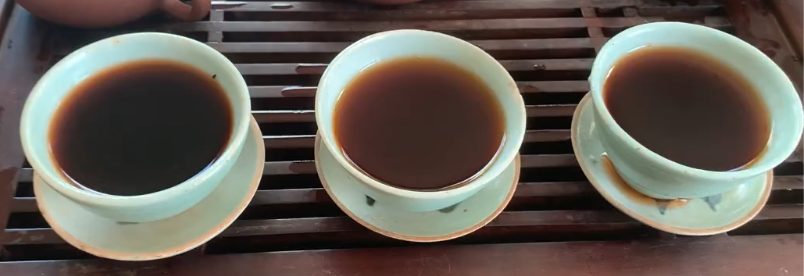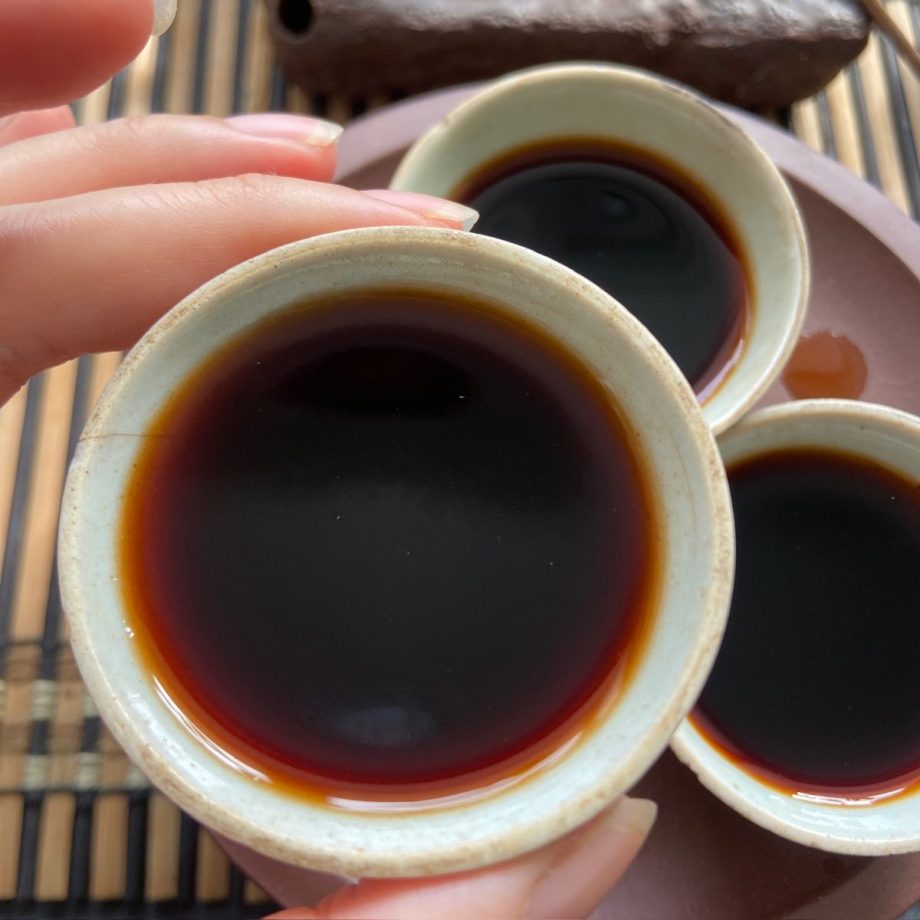Short recap:
A) Brew the tea really long (2-5 minutes), all genuine very old tea should:
- be not harsh at all (intensely flavourful and possibly a bit bitter, but not astringent and the bitterness should turn into sweetness)
- have strong body and some bitterness
- not have ‘wo-dui’ (shou puerh fermentation) or storage flavours
- the mouth, throat and tongue should not pinch or be constricted
- have deeply calming Qi (if you can feel it)
B) Old tea will have a more defined lighter-coloured outer ring in the cup (the tea on the left in the image is the oldest)

C) If the dry leaves are more red hue than green, it’s likely shou puerh or has had a lot of natural storage (wet storage will also make leaves more dull and grey)
D) If the wet leaves are near 100% black, it’s likely shou puerh. 1900s-1950s tea can sometime look 90-95% black too so you need to look very closely. But if you get a tea meant to be 1960s and it’s black, it’s almost certainly shou puerh from later on (there was no shou puerh in the 60s and hardly any surviving from the 70s)
Video 1, drinking three old oolongs:
Video 2, drinking three ‘I think they could all be sheng puerh’:
